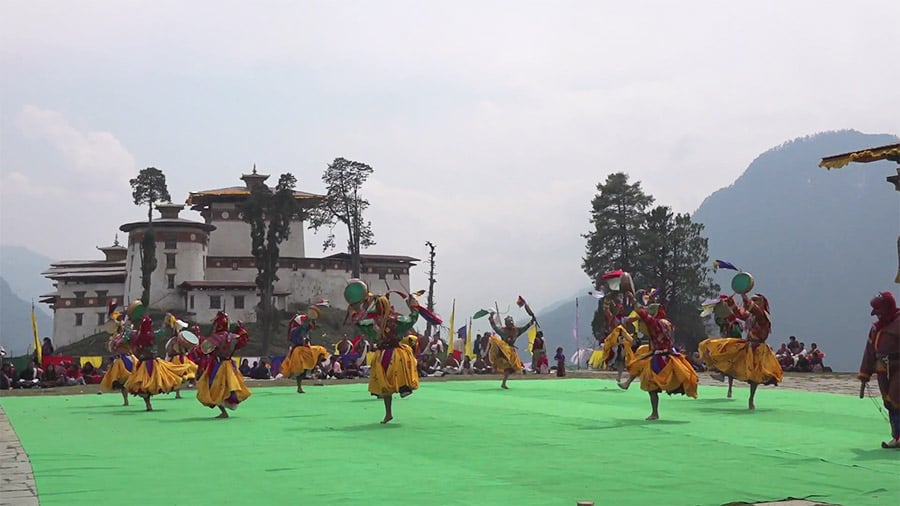
Annual tshechu is a time for celebrations, for people to witness sacred mask dances and other cultural performances. In Gasa, the three-day annual tshechu appears to be exhausting the mask dancers this year. The district is facing a shortage of mask dancers. Some of the dancers perform 15 mask dances in three days. The strain of performing excessively has made it difficult for them to embrace the celebratory spirit.
23-year-old Damchoe Rinchen from Khatoed Gewog is getting ready for his first mask dance, Jue-ging chham. This tshechu, Damchoe has to perform ten different mask dances.
He says it’s getting challenging although he loves learning and performing various mask dances. Since he started performing in 2022, it is his first time taking part in ten mask dances. He used to perform only a couple of mask dances.
Damchoe Rinchen says, “It is difficult when we change dresses and we can’t be on time like other dancers. When we have to perform many mask dances, we don’t get time to visit restrooms. And after the performance, our body aches.”
As the day ends, Damchoe and his friends who had been performing mask dances throughout the day, are exhausted. They say they try to showcase the mask dances as energetically as their first performance but weariness from countless rehearsals and performances affect the show.
“I am participating in 15 different mask dances in three days. It’s exhausting and we face challenges. It is not much of a problem on the first day of the tshechu but it gradually becomes tiring. We have difficulty getting up from our bed,” says Pema Tshewang, one of the mask dancers.
Damchoe Rinchen adds, “It is challenging to remember every step of many mask dances. If we have sufficient mask dancers, it will become easier for us. We will not have to perform multiple mask dances like today. It will help give a lively performance.”
The mask dancers are hoping to see additional dancers next year.
According to the District Cultural Officer, at least eighty people are required for mask dances, and Pazaap and Layap dances. Although there are enough for Pazaap and Layap dances, the district is facing a shortage of mask dancers.
Currently, there are only 28 mask dancers when they need more than 30.
Cultural Officer Phub Tshering says, “We have participants from only three Gewogs. We have a larger population in Laya and Lunana. However, since Lunana Gewog is far away from here, they don’t have to take part. So, we are unable to get sufficient dancers from the three Gewogs. Of course, we have from Khatoed and Khamaed Gewogs but it’s not enough.”
The officer says eight mask dancers applied for resignation but had to withhold their resignation as there was no one to replace them.
The government is paying the dancers Nu 700 to 1,000 per day during the festival excluding the salary of Nu 2,500 to 3,000 per month.
Gasa Tshechu was initiated in 2002. The three-day annual Tshechu which began yesterday will end tomorrow.
Changa Dorji, Gasa
Edited by Sangay Chezom












